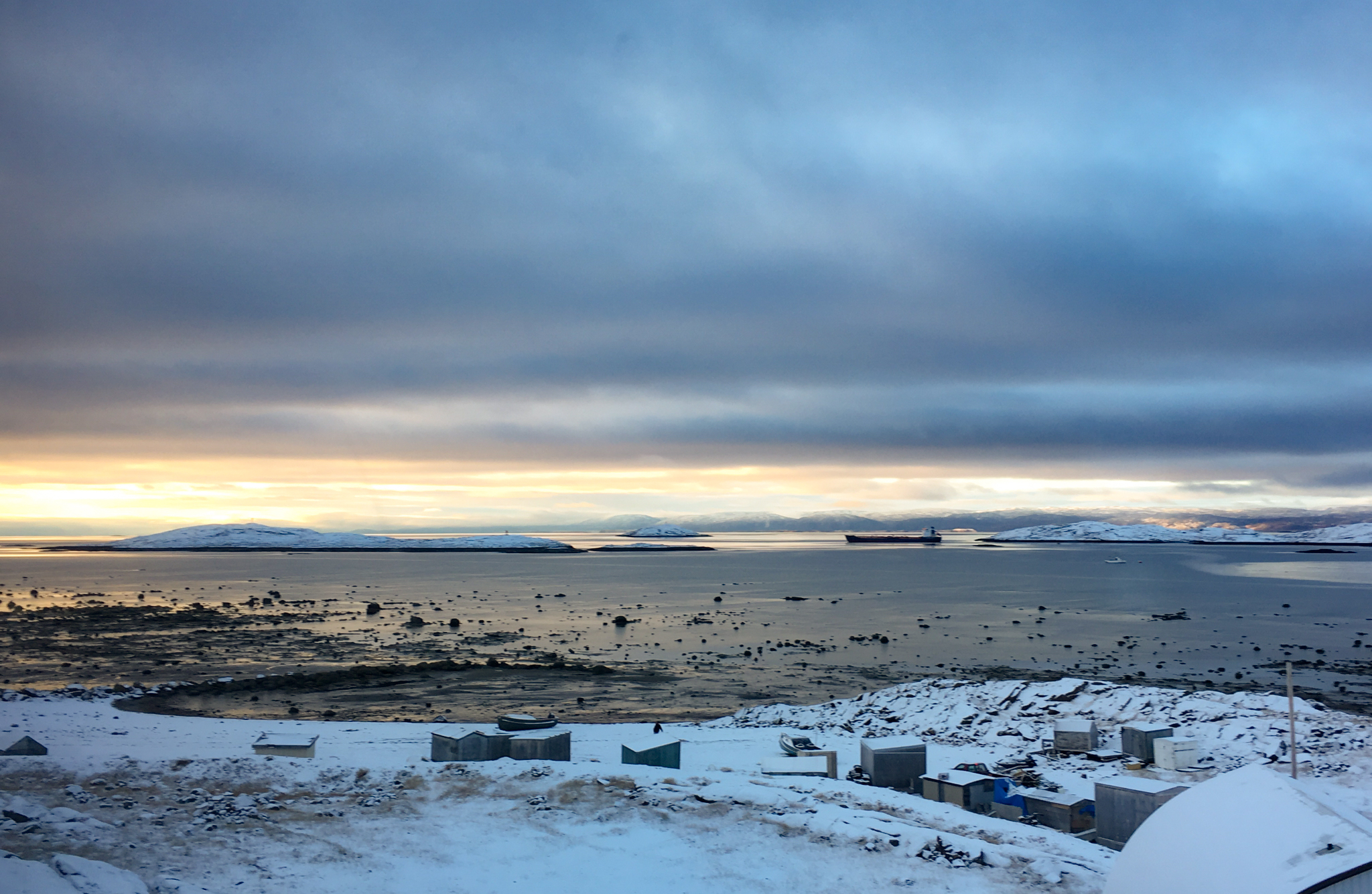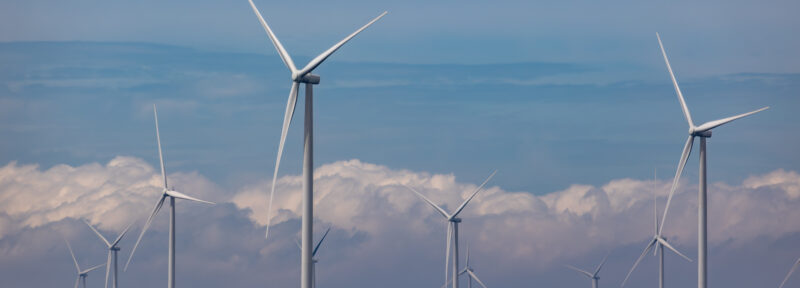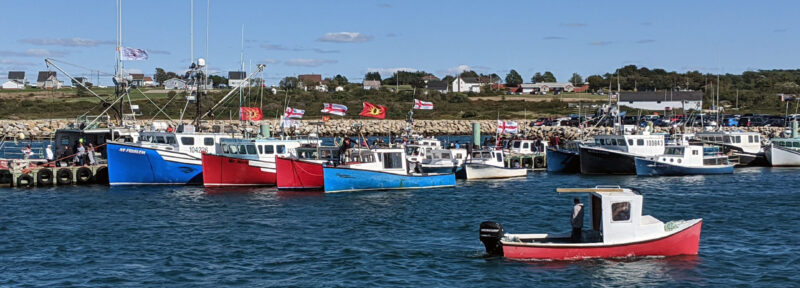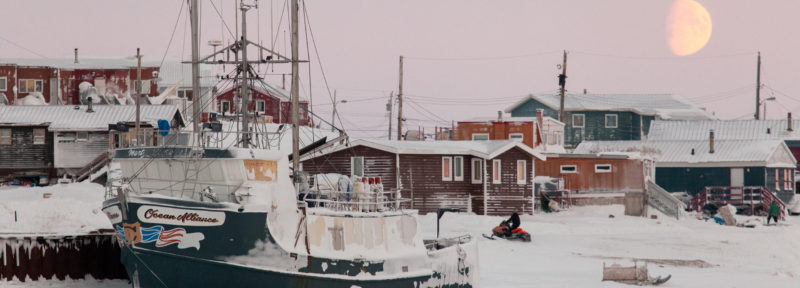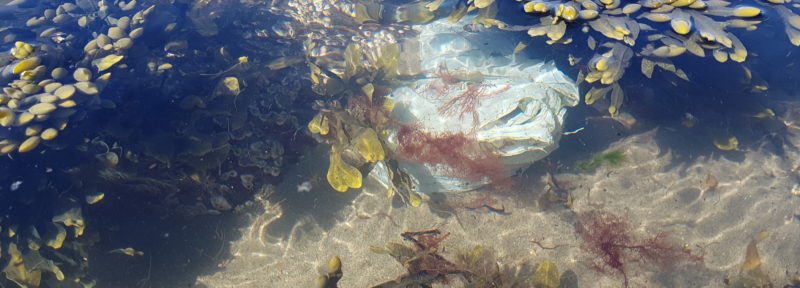Fast-track Expansion of Baffinland Mine Doesn’t Help Nunavummiut
Looking out over Frobisher Bay from Nipisa Street in Iqaluit.
Credit: Trevor Taylor
I live on Nipisa Street in Iqaluit. My house with three large windows faces southwest and overlooks Frobisher Bay and the hills which rise over 2000 feet from the sea on its west side. On crystal-clear northern days, of which there are many, I have one of the best views of any house in the country. I never tire of it and on countless occasions I feel compelled to take a picture with my phone and text it to my family, friends and work colleagues to show them how truly spectacular it is. And their responses always confirm that I am right.
From early July to mid-November, I watch the freighter canoes, the Silver Dolphins, the Jag Fabs, the Sea Runners and myriad other craft travel between the breakwater and the causeway to hunting and fishing spots throughout the bay and beyond. In winter, I watch the snowmobiles and qamatiqs head along the bay to the floe edge and polynyas, hunting for seals, whales and birds, or to the lakes and rivers and valleys and hills for char and ptarmigan. Some of the travelers are weekend warriors like myself and some are hard-core hunters whose daily catch provides crucial food, clothing and income. On many February mornings, with the thermometer at -35 C and a stiff Northwesterly blowing down the bay, I look out in awe of the hunters heading down the bay. I know then that they are in their element and I am but an amateur.
And then out of the sky flies a 737 on its approach to the airport. I look up and the familiar emblem of the Nolinor jet carrying workers to the Baffinland Iron Mine at Mary River passes in front of my window. Every day, once flying north and once flying south, it goes by and lands to refuel, drop off or pick up a few passengers from Iqaluit, and takes off again with mostly southern passengers. Originating in London, Ontario, the plane carries Baffinland mine workers in and out on their rotations. While exact numbers aren’t available, it’s estimated that less than15 per cent of the work force are from the north and even less than that are Inuit.
Every time I see the plane, I can’t help but wonder why it’s this way. There are many reasons and probably some excuses. But valid or otherwise, the explanations beg this question: Are Inuit, their organizations, the Nunavut government and the territory best served by the current approach to development of this mine?
I’m not questioning whether there should be a mine. I’m asking whether the proposed plan to ramp up extraction at the mine is the best short-and-long-term approach for Inuit and the territory – a question echoed in a recent socioeconomic report commissioned by Oceans North. The Mary River mine has a lifespan. Although it has been suggested that the mine could produce iron ore for 100 years, a recent project plan submitted by Baffinland to the Nunavut Impact Review Board proposed it could all be over within 20 years. That plan has proposed ramping up production to over 30 million tonnes annually by 2025 and starting to decommission the mine in 2035. If Inuit need training to secure jobs at the mine, they will never comprise a majority of the work force on that timeline.
A Pond Inlet resident watches as a freighter makes its way to the Mary River iron mine in Milne Inlet.
Credit: Oceans North
And two other points need to be acknowledged. First, there probably isn’t a mine or remote industrial project in the country that doesn’t rely extensively on fly in/out workers. Second, the labour pool in the Baffin region is clearly not large enough to provide all the workers to this mine site. However, with Inuit employment at such a low level, and less than other similar mine sites, ask yourself what benefit is the increase in production if it continues to rely mostly on outside workers? These workers don’t pay income taxes to the Government of Nunavut, they don’t pay property and water and sewer taxes to the city of Iqaluit, and they don’t contribute to the improved social welfare of the Baffin region.
A slower approach to increased production at the mine is warranted, at least until Nunavummiut are employed in numbers that ensure the territory, its people and its government are maximizing the return from this resource. To do otherwise, ensures a major portion of the financial benefit from Baffinland will flow south with every Nolinor load of workers that flies by my window.
Trevor Taylor is vice-president of conservation for Oceans North.

